Force Exe-1B and 1C Class-10 ICSE Selina Physics Solutions Chapter-1. We Provide Step by Step Answer of Exercise-1(A), Centre of gravity Exercise-1(B), MCQ-1(B), Uniform circular motion Exercise-1(C) and MCQs-1(C) Questions of Exercise-1 Force ICSE Class-10 . Visit official Website CISCE for detail information about ICSE Board Class-10.
| Board | ICSE |
| Publications | Selina Publication |
| Subject | Physics |
| Class | 10th |
| Chapter-1 | Force (Exercise 1B and 1C) |
| Book Name | Concise |
| Topics | Solution of Exe-1(A), MCQ 1(A), Numericals 1(A), Exe-1(B), MCQ 1(B), Exe-1(C), MCQ 1(C) |
| Academic Session | 2021-2022 |
Force Exe-1B and 1C Class-10 ICSE Selina Physics Solutions Chapter-1
-: Select Exercise :-
Exe-1(A), MCQ 1(A), Numericals 1(A),
Exe-1(B), MCQ 1(B), Exe-1(C), MCQ 1(C),
Moment of force; Forces in Equilibrium; Centre of gravity. Elementary Introduction Of Translation and rotational Motions; Moments of a force, torque and its C.G.S. and S.I. units .Simple Numerical s Problems.
Selina Physics Solutions Force Exercise 1 (B)
Force Exe-1B and 1C Class-10 ICSE Selina Physics
Page 14
Question 1
Define the term ‘centre of gravity of a body’.
Answer 1
Centre of gravity is the point about which the algebraic sum of moments of weights of particles constituting the body is zero and the entire weight of the body is considered to act at this point.
Question 2
Can the centre of gravity of a body be situated outside its material of the body? Give an example.
Answer 2
Yes, the centre of gravity can be situated outside the material of the body. For example, centre of gravity of ring.
Question 3
State factor on which the position of centre of gravity of a body depend? Explain your answer with an example.
Answer 3
The position of centre of gravity of a body of given mass depends on its shape i.e., on the distribution of mass in it. For example: the centre of gravity of a uniform wire is at its mid-point. But if this wire is bent into the form of a circle, its centre of gravity will then be at the centre of circle.
Question 4
What is the position of centre of gravity of a:
(a) A rectangular lamina and
(b) the cylinder?
Answer 4
(a) At the point of intersection of its diagonals.
(b) At the mid point on the axis of cylinder.
Question 5
At which point is the centre of gravity of situated in:
(a) A triangular lamina and
(b) A circular lamina?
Answer 5
(a) Centre of gravity of a triangular lamina is situated at the point of intersection of its medians.
(b) Centre of gravity of a circular lamina is situated at the centre of circular lamina.
Question 6
Where is the centre of gravity of a uniform ring situated?
Answer 6
Centre of gravity of a uniform ring is situated at the centre of ring.
Question 7
A square card board is suspended by passing a pin through a narrow hole at its one corner. Draw a diagram to show its rest position. In the diagram mark the point of suspension by the letter S and centre of gravity by the letter G.
Answer 7
A square card board in rest position with G as centre of gravity and S as point of suspension.
Page 15
Question 8
Explain how will you determine experimentally the position of centre of gravity for a triangular lamina (or a triangular piece of card board).
Answer 8
Take a triangular lamina. Make three fine holes at a, b, c near the edge of triangular lamina. Now suspend the given lamina along with a plumb line from hole ‘a’. Check that the lamina is free to oscillate about the point of suspension. When lamina has come to rest, draw straight line ad along the plumb line. Repeat the experiment by suspending the lamina through hole ‘b’ and then through hole ‘c’ for which we get straight lines be and cf respectively. It is noticed that the lines ad, be and cf intersect each other at a common point G which is the position of centre of gravity of triangular lamina i.e. the point of intersection of medians.
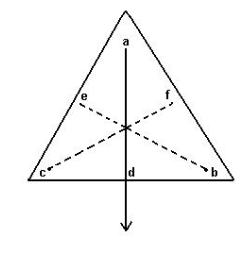
Question 9
State whether the following statement is true or false.
(i) The position of centre of gravity of a body remains unchanged even when the body is deformed’.
(ii) ‘The centre of gravity of a freely suspended body always lies vertically below the point of suspension’.
Answer 9
(i) False. The position of centre of gravity of a body of given mass depends on its shape i.e., on the distribution of mass in it.
(ii) True.
Question 10
A uniform flat circular rim is balanced on a sharp vertical nail by supporting it at point A, as shown in Fig. 1.41. Mark the position of centre of gravity of the rim in the diagram by the letter G.
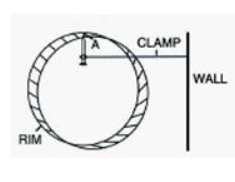
Answer 10

Question 11
Figure 1.42 shows three pieces of card board of uniform thickness cut into three different shapes. On each diagram draw two lines to indicate the position of centre of gravity G.

Answer 11
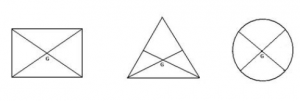
Force Exe-1B and 1C Class-10 ICSE Selina Physics
MCQs – 1 (B) Concise Selina Physics Solutions Force
Page 15
Question 1
The centre of gravity of a uniform ball is
(a) At its geometrical centre
(b) At its bottom
(c) At its topmost point
(d) At any point on its surface
Answer 1
(a) At its geometrical centre
Question 2
The centre of gravity of a hollow cone of height h is at distance x from its vertex where the value of x is:
(a) h/3
(b) h/4
(c) 2h/3
(d) 3h/4
Answer 2
The centre of gravity of a hollow cone is at a height h/3 from the base. Hence, from the vertex the height is h – h/3 = 2h/3.
Hence, the correct answer is option (c) .
Exercise -1 (C) Selina Physics Solution Force
Force Exe-1B and 1C Class-10 ICSE Selina Physics
Page 18
Question 1
Explain the meaning of uniform circular motion. Why is such motion said to be accelerated?
Answer 1
When a particle moves with a constant speed in a circular path, its motion is said to be the uniform circular motion. For example : Revolution of earth around sun is an example of uniform circular motion.
Question 2
Draw a neat labelled diagram for a particle moving in a circular path with a constant speed. In your diagram show the direction of velocity at any instant.
Answer 2
Particle moving in a circular path with a constant speed.
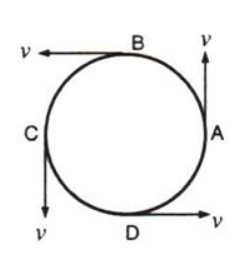
Question 3
Is it possible to have an accelerated motion with a constant speed? Name such type of motion.
Answer 3
Yes, uniform circular motion has an accelerated motion with a constant speed.
Question 4
Give one example of motion in which speed remains uniform, but the velocity changes.
Answer 4
Motion of a cyclist on a circular track is an example of motion in which speed remains uniform, but the velocity changes.
Question 5
A uniform circular motion is an accelerated motion. Explain it. State whether the acceleration is uniform or variable? Name the force responsible to cause this acceleration. What is the direction of force at any instant? Draw diagram in support of your answer.
Answer 5
When the object moves in a circular path with uniform speed, it means that its magnitude of velocity does not change, only its direction changes continuously. Hence, it is considered as uniformly accelerated motion.
Question 6
Differentiate between a uniform linear motion and a uniform circular motion.
Answer 6
| Uniform linear motion | Uniform circular motion |
| The body moves along a straight line. | The body moves along a circular path. |
| Speed and direction both remain constant. | Speed is constant, but direction changes continuously. |
| It is not an accelerated motion. | It is an accelerated motion. |
Question 7
Name the force required for circular motion. State its direction.
Answer 7
Centripetal force is required for circular motion. It is always directed towards the centre of circle.
Question 8
What is centripetal force?
Answer 8
Force acting on a body which is in circular motion is called centripetal force. It acts towards the centre of circular path.
Question 9
Explain the motion of a planet around the sun in a circular path.
Answer 9
A planet moves around the sun in a nearly circular path for which the gravitational force of attraction on the planet by the sun provides the necessary centripetal force required for circular motion.
Question 10
(a) How does a centripetal force differ from a centrifugal force with reference to the direction in which they act?
(b) Is centrifugal force the force of reaction of centripetal force?
(c) Compare the magnitudes of centripetal and centrifugal force.
Answer 10
(a) They act in opposite directions.
(b) No, centrifugal force is not the force of reaction of centripetal force.
Question 11
Is centrifugal force a real force?
Answer 11
No, centrifugal force is a fictitious force.
Question 12
A small pebble tied at one end of a string is placed near the periphery of a circular disc, at the center of which the other end of the string is tied to a peg. The disc is rotating about an axis passing through its centre.
(a)What will be your observation when you are standing outside the disc? Explain.
(b)What will be your observation when you are standing at the centre of the disc. Explain.
Answer 12
(a) On standing outside the disc, we find that the pebble is moving on a circular path.
(b) On standing at the centre of the disc, we find that the pebble is stationary placed just in front of us.
Question 13
A piece of stone tied at the end of a thread is whirled in a horizontal circle with uniform speed with the help of hand. Answer the following questions.
(a) Is the velocity of stone uniform or variable?
(b) Is the acceleration of stone uniform or variable?
(c) What is the direction of acceleration of stone at any instant?
(d) What force does provide the centripetal force required for circular motion?
(e) Name the force and its direction which acts on the hand.
Answer 13
(a) Variable
(b) Variable
(c) Towards the centre of the circular path
(d) Tension in the string
(e) The reaction of tension away from the centre of the circular path.
Question 14
State two differences between the centripetal and centrifugal force.
Answer 14
| Centripetal force | Centrifugal force |
| It acts towards the centre of the circle. | acts away from the centre of the circle. |
| this is a real force. | and It is a fictitious force. |
Question 15
State whether the following statements are true or false by writing T/F against them.
(a) Earth moves around sun with a uniform velocity.
(b) The motion of moon around the earth in circular path is an accelerated motion.
(c) A uniform linear motion is unaccelerated, while a uniform circular motion is an accelerated motion.
(d) In a uniform circular motion, the speed continuously changes because the direction of the motion changes.
(e) A Boy experiences a centrifugal force on his hand when he rotates a piece of stone tied at one end of a string, holding the other end in the hand.
Answer 15
(a)False
(b)True
(c)True
(d)False
(e)False
Selina Physics Solutions Force MCQs -1(C)
Force Exe-1B and 1C Class-10 ICSE Selina Physics
Page 18
Question 1
Which of the following quantity remains constant in uniform circular motion:
(a) Velocity
(b) Speed
(c) Acceleration
(d) Both velocity and speed
Answer 1
(b) Speed
Question 2
The centrifugal force is:
(a) a real force
(b) the force of reaction of centripetal force
(c) a fictitious force
(d) directed towards the centre of circular path
Answer 2
(c) The centrifugal force is a fictitious force.
Return to Concise Selina ICSE Physics Class-10
Thanks
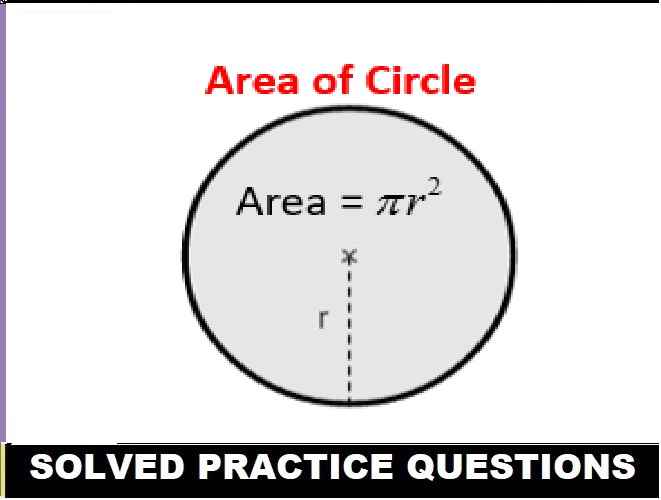
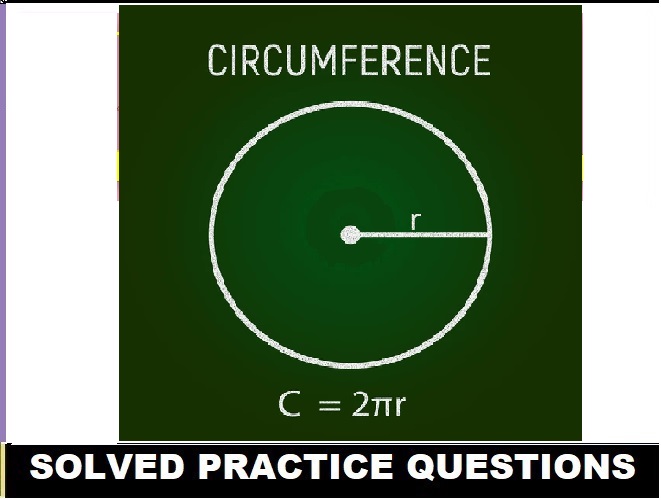
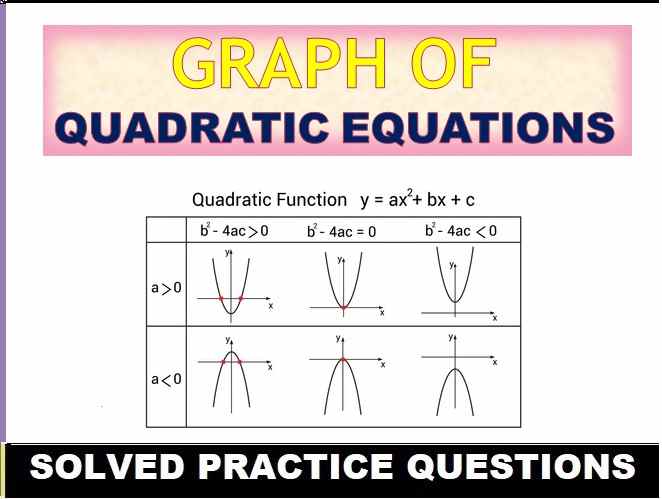
You and your team is doing a great work. To find any answer I don’t want to search anywhere except your website. I thanks you from the side of my whole class 10th Sci C of St. George’s College Unit1 in Agra Uttar Pradesh.
Thanks for positive response